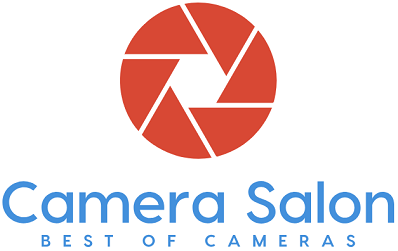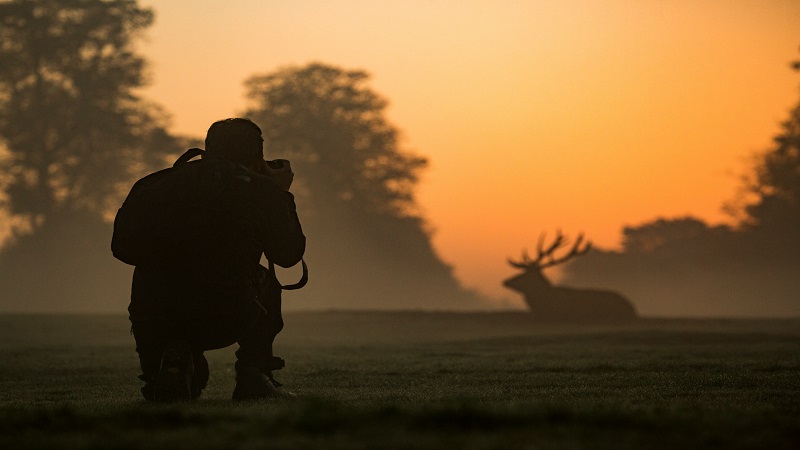How to become a wildlife photographer? Every photographer considers getting into wildlife photography at least once in his career. Nothing matches the thrill of capturing wild animals like lions, wolves, elephants, and giraffes. Creating beautiful photos in nature is simply breathtaking and addictive.
However, wildlife photography requires much more than having an expensive camera. It is about going out, sacrificing your comfort, playing with danger, exposing yourself to natural elements, and staying away from your family. You have to cope with all of these if you long to pursue wildlife photography as a career.
In simple words, you can only begin with nature and wildlife photography if you are willing to accept all these challenges. Furthermore, you must also have complete mastery of your camera and excellent technical skills. You should look for other careers if you don’t have these things in you.
Taking pictures of animals in the wild can be a rewarding experience both financially and personally. You get to visit different places, spend time with animals, and take beautiful photos to share with the rest of the world.
Our guide offers all the tips and tricks an aspiring wildlife photographer needs to succeed.
What is Wildlife Photography?
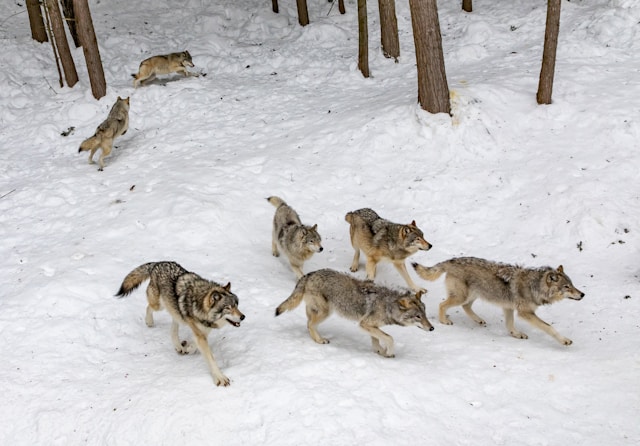
Wildlife photography is a type of photography in which you take pictures of wild animals in their natural habitat.
The aim is to study different kinds of animals while capturing them in your camera without disturbing them. You do not try to change their behaviors as well. This is the only way to truly reflect the realities of the wild.
However, wildlife photography is much more demanding than this simple definition.
For most people, it is just immersing in nature and spending some quality time. But – you may have to work in remote jungles and places notorious for unpredictable conditions and weather. Sometimes, it is difficult to photograph the targeted animal or simply find it. On top of that, you do need a creative eye and complete mastery of your camera to take captivating images if you do succeed in locating the species.
Also, keep in mind that wildlife photography is further divided into many branches. Similarly, most photographers have their specific style of work. Therefore, you need to develop a specific set of skills as well depending on these factors.
What will You Do as a Wildlife Photographer?
The main purpose of wildlife photography is to study wildlife and record its beauty and diversity in photographs.
It also falls into the category of wildlife conversion. Therefore, you also play your part in making this world a better place. For example, your photos can bring awareness about endangered species or the disappearing habitat of certain animals. It helps the rest of the world to understand and pay attention to the problem.
You may focus on the following as a wildlife photographer.
- Photography assignments for magazines and other publications
- Creating licensed images
- Selling photographs and stories to outlets
- Selling prints
- Document specific conversation projects or species in collaboration with nature organization
- And much more
Keep in mind that wildlife photography is one of the most difficult jobs in the world. You have to invest substantially in your photography equipment right from the start of your career. Furthermore, it requires a lot of time and personal commitment.
However, it is well worth spending all the money and time on wildlife photography. You will understand this once you take your first picture.
Not to mention, you will also start making money once you become an experienced photographer and promote yourself on the right platforms.
Do You Need to be a Full Time Wildlife Photographer?
It depends on your experience and if you are fully committed to wildlife photography. Some wildlife photographers are making a full-time living by selling their photos and projects. But – they have been wildlife photos for years now.
What if wildlife photography is just a hobby or a means of studying wildlife life? You can still make money from it as a part-time job or side gig. It may be a better option for you if you want to increase your income using your passion. Making wildlife photography a full-time job is extremely difficult.
In both cases, it all comes down to how much time you can set apart.
You can continue your current job or business if you are not fully committed to taking pictures of animals. Instead, practice shooting wildlife on weekends or after work.
Professional photographers often support their work by having part-time jobs. However, they focus mostly on their photos and practice rather than their side gig.
Therefore, consider it as a side job as long as you cannot spend your whole life with animals. It will not only able you to earn some extra money but will also allow you to hone your skills to a professional level in the meantime.
How to Become a Wildlife Photographer?
You need to take the following steps if you are wondering how to become a professional wildlife photographer right now or after a few years.
Invest in Quality Photography Equipment
Do you need expensive cameras and lenses right from the start of your journey? In my opinion, you can start with the camera you currently have. It can at least help you improve your wildlife tracking and composition skills.
However, you must move on to more advanced equipment once you are ready to start working professionally.
There are two things to consider here. Either you buy expensive gear right from the start. This may include a professional camera, a high-end lens, a sturdy tripod, straps, rain covers, bags, and other accessories. All these things may cost you a lot of money but it will come back once you start earning with your wildlife photos.
On the other hand, you may continue using your camera to learn the basics and necessary skills before investing in expensive gear. Only spend money on cameras and lenses when you think you are ready.
Learn to Take High Quality Photographs
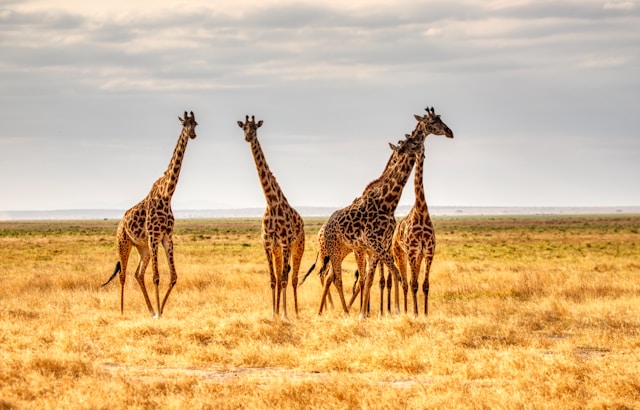
A lot has been written about how to take beautiful and high-quality photographs. Your wildlife photographs should be of the highest quality and stand out from the rest for people to pay for them. It is only possible if you practice long and hard.
You can join a photography school or even get a degree in photography. There is nothing wrong about it. You must continuously learn and develop your skills. However, you can become a great wildlife photographer without a degree as well.
On the contrary, you need continuous efforts, patience, and above all, practice. Learn how to comfortably use your camera, lenses, lighting, tripod, and other basics. The best way of learning is to assist an experienced wildlife photographer.
You can also learn a lot by going through the portfolios of the best wildlife photographers. Get some inspiration from their photos besides learning about the best poses of certain animals and composition tricks.
Start with Capturing Local Wildlife
You do not have to go to Africa to capture wildlife. You can start practicing to take stunning photos of local animals. For example, you can find a lot of wild animals in your local park. You can learn their behaviors and shoot them. This will enable you to understand and anticipate animals’ movements and craft your shots more creatively.
Similarly, try to capture moving animals or flying birds. These are essential techniques if you want to capture and document interesting behaviors. Learn how to create dynamic images using natural light and produce creative compositions. Everyone can photograph a bird sitting on a stick or a dog sleeping in the alley. You have to go beyond these run of the mill shots and make images that amaze and surprise viewers.
Learn Naturalist Skills
You must also learn all the naturalist skills you can. It is necessary if you want to trail wildlife, spot signs, and find the best places to photograph animals. More importantly, it enables you to explore unique situations and behaviors to document.
Study Animal Behavior
You can only take stellar wildlife shots if you take time to learn animal behavior. You must learn everything about your target species. It may include how they live, their habits and habitat, and even how they move. You must know how it behaves in danger, how it sleeps, or what it does when it is nervous. This is the only way to predict and anticipate their movements and photograph them in their natural habitat.
Learn Photo Editing Skills
You can further improve your photos and make them even more beautiful by learning new photo editing skills.
RAW images from the camera lack the professional touch even though they are good to look at. That is only possible if you edit them in software like Lightroom or Photoshop. You can subtly but powerfully edit images to make them more dynamic and professional.
Most people wrongly consider photo editing just as post-processing. You also have to select the right image to edit. Similarly, you have to develop critical thinking to choose the best images. Some photos simply do not look great no matter how much editing you do.
A great photographer looks to create unique and amazing images not just sharp and detailed images.
Build Your Portfolio
Once you are experienced enough to take stunning photographs and improve them in post-processing, it is time to build your portfolio. This is what really makes you a professional photographer.
Take photos of different animals, weather conditions, locations, styles, and other things. Your portfolio should portray your knowledge and diversity of skills to potential clients. Furthermore, you can license all these images as well.
As you build your portfolio, you will also identify what your unique style is. Focus on that style while expanding your portfolio including all types of images and styles.
Start a Wildlife Photography Project
Starting your own wildlife photography project offers a lot of benefits. Firstly, it provides necessary exposure because people in the photography industry get to know about you. Secondly, it also enhances your skills and repertoire considerably.
You get the recognition because it allows you to showcase your talent to potential clients. On top of that, you get valuable experience as well.
You can include anything ranging from capturing animals in the zoo to photographing cats and dogs in your local project. Similarly, you can also study the behavior of animals as they come and go and document the changes over time.
A local project provides you with a chance to demonstrate that you have a creative eye to take stunning images. It also helps you show your commitment to wildlife conversation as well as an opportunity to gain deep knowledge of a specific species or topic.
Starting a photography project can be the most important step on your way to becoming a successful wildlife photographer.
Networking is Crucial
You need good networking to succeed in any career and wildlife photography is no different. You must have connections with more experienced or successful wildlife photographers to build a successful business or at least get the opportunities.
You can open a lot of doors with the help of networking. For example, you can come across people who can help you get to out of bound locations, necessary to climb the ladder. You will get a lot of leads for wildlife stories through networking. It will also offer countless publication opportunities you have no idea about.
Proper networking also enables you to learn from more experienced or established photographers. Their advice and tips will ab invaluable on how to get into animal photography. Your connections will help you expand your circle and get more chances to succeed.
Participate in Photography Contests
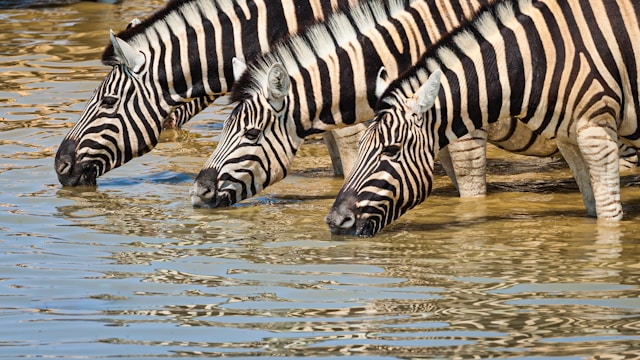
It is also a kind of networking. Winning a photography contest will present you as a potential client. You will get more opportunities to come in contact with potential collaborators, publications, editors, etc. Secondly, it will portray you as a committed wildlife conversationalist besides bringing attention to the topic you are working on.
Research thoroughly to Set Your Prices
Talking about money, you must be wondering what is wildlife photography salary or how much you can earn as a wildlife photographer. It depends on the species you cover, your experience, and your region. You will earn more if you commit yourself to photographing rare animals.
However, you can always set your own path and set your own prices. In general, the average annual income of wildlife photographers is $25000 to $62000.
You must search your competitors, local prices, and market trends to set your price. Take some advice from more experienced photographers or those who have been working in the area for a long time.
Work as a Freelancer
You must also be wondering how to become a wildlife photographer for National Geographic. This is the dream of every aspiring and new photographer. However, it is extremely difficult to join magazines like National Geographic.
However, you should never lose hope. You can still get your images published in prestigious magazines by working as a freelancer.
You will not earn much by becoming a true freelancer. What you can do is choose your clients and sell your photos to specific publications only.
Be Ready and Very Patient
Wildlife photography is all about patience. You may not find your target animal for hours or even days. Sometimes, the weather is just not fine and you have to wait for it to clear.
Therefore, you have to be ready because the perfect moment can come at any time. For example, capturing moving animals requires a lot of skill, patience, and readiness. You must know how to capture sharp images of moving wildlife.
Wildlife photography is analogous to predators hunting their prey. The predator may remain hungry for days because he cannot find prey. But – he always keeps looking and seizes the opportunity when it presents itself.
Prepare to Spend a lot of Time Outdoors
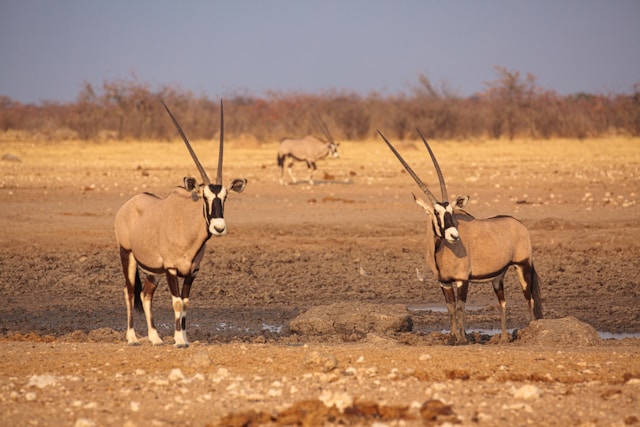
A wildlife photographer will mostly work outdoors. Sometimes, you have to move on a moment’s notice. Your camera and equipment should always be ready and packed.
Similarly, you will encounter different weather conditions. You must be strong enough to withstand natural elements.
It is even better if you like camping, hiking, and walking for hours. You must also be willing to leave civilization behind for days.
Respect Nature and Animals
You must give respect to both nature and wildlife as well. It is the most fundamental aspect of becoming a wildlife photographer. The goal of taking photos of those majestic animals is to bring awareness and to tell the world they should be protected.
Harming animals or destroying their habitat should never be on your mind. It is their home and you are their guest. It is an opportunity of a lifetime and you must be thankful for it.
9 Ways to Earn Money from Wildlife Photography
We have already mentioned the annual salary of a nature photographer above. However, how much money you can earn as wildlife photographer entirely depends on your creativity and willingness to come out of your comfort zone.
The following are a few ways to get started.
Find New Clients
You can find new clients who will pay you for taking wildlife photos for them. These clients may include organizations and companies working on wildlife and nature conversation or similar issues. Similarly, some companies also buy the photos for their marketing or awareness campaigns. The opportunities are limitless here.
You must negotiate your rate before embarking on the journey. The salary or package will also differ from client to client. Therefore, you must include the following expenses in your price.
- Rent for equipment
- Travel expenses including lodging
- Expenses for additional accessories such as memory cards and hard drives
- Hiring an assistant
- Permits and access fees
It takes time to find new clients. You must try to provide excellent work in time for your current clients. Build relationships and a reputation as a reliable and hardworking professional. Your referrals will bring new clients for you and you will start building your business.
Teaching, Workshops, and Tours
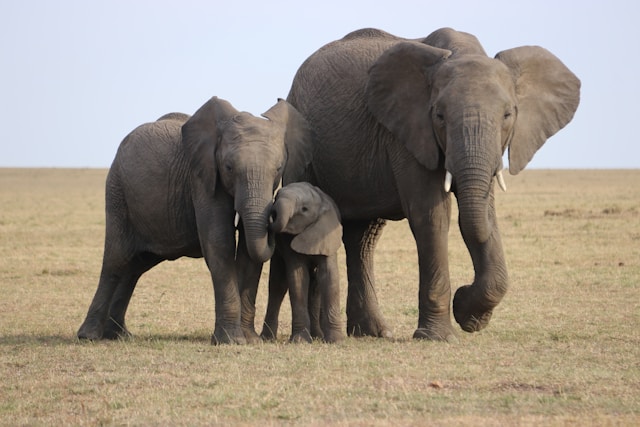
Another way of making money through wildlife photography is to offer extra services. These services include starting wildlife photography courses, classes, or workshops.
You can also improve your photography and editing skills considerably through these courses. Students usually ask questions that help you go deep into the photography. Similarly, you can get some inspiration from your students’ photos as well.
Another service you can offer is tours. It enables you to teach tricks of the trade on the spot. You can also take the participants to the best places to photograph animals or provide detailed instructions on how to capture specific animals
You can also cover your travel expenses with the fees you charge for tours and workshops. It also enables you to boost your income, get more exposure, and get extra time to enjoy nature.
Keep in mind that you can only become a good wildlife photographer if you diversify your profile as much as possible.
Pitch Your Stories
Pitching your photo stories to publications and magazines can also generate money for you. Newspapers and magazines are always in search of breaking stories. You may get a lucrative deal if you have photos of a rare or endangered animal or spectacular images of wildlife.
You can either pitch an idea or a whole story to publications or wait for their response. The idea can help you get the assignment to convert it into a full story. Stories are a great way to build a library of licensable images but also to get your photos published in reputable magazines.
Assignment Work
Sometimes organizations directly hire you to complete an assignment. These assignments usually include taking wildlife photographs for a specific purpose. You may have to create a photo story for a magazine, cover new events for a newspaper, or simply cover an issue over a while as it unfolds.
There are two ways to get paid for assignment work. You may ask for a day rate and get paid for the number of days you work. Or, you may charge a fixed price for the whole project.
Stock Agency and Licensing Images
Most wildlife photographers earn money by licensing their images for use in commercial projects, magazines, and publications.
You can take photos of wildlife and nature and then license them to stock agencies and news outlets. You can earn good money from stock agencies even though the industry is not as lucrative as it used to be. Try to deal with companies that mostly emphasize wildlife photography such as Tandem, Minden, Nature Picture Library, and other trustworthy agencies.
It is also possible to license your images yourself without stock websites. Use websites and tools like Fotoquote to set a competitive rate for your photos.
Memberships
You can also earn a handsome amount of money from membership platforms. You can start a subscription service on these platforms and charge a monthly fee for members to access tips, tutorials, courses, and other exclusive content.
The best membership platforms for wildlife photographers are as follows.
- Mighty Networks
- Patreon
- Podia
- Memberpress (You can add a subscription service on your website using this WordPress plugin)
Grants
Many wildlife conversation organizations such as the NANPA Foundation and Terra Viva also offer grants to wildlife photographers. You can also apply for the grant yourself. The grants can include anything from travel expenses, cost of equipment, or even a day rate depending on its terms.
Gallery and Exhibit Sales
Showcasing your images in galleries and museums is a great way of earning money as well. They also launch competitions for photographers to show their work to a greater audience. You also don’t have to know the owner of a gallery or own one yourself. You can simply join a sale or auction or collaborate with a gallery.
Some photographers also set up booths and stalls at public events. The overhead makes it an expensive option but it can be quite rewarding if you have a solid foundation and good reputation.
Books, Prints, and Calendars
You can also earn a good amount of money through printables. More and more wildlife photographers are putting their photos on dedicated websites such as Etsy. It enables users to easily print photos on T-shirts, caps, mugs, and other items and you get paid in return.
You can charge highly for your photos depending on how unique or beautiful they are. Try to take photos that stand out from the crowd. Turn them into printables and you can generate healthy passive income
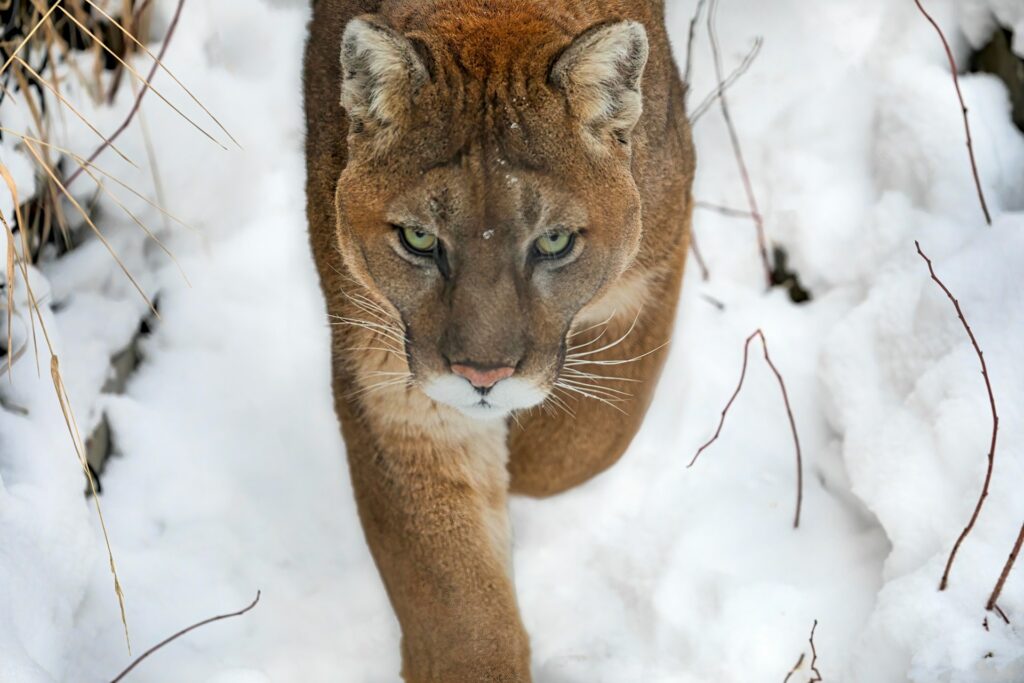
Frequently Asked Questions
Which degree is best for wildlife photography?
The best degree for wildlife photography could be a degree in Photography itself or in fields such as Zoology, Environmental Science, or Wildlife Conservation to understand animal behavior and habitats.
Who is the best wildlife photographer?
Identifying the “best” wildlife photographer is subjective as it depends on personal taste; however, awards like the Wildlife Photographer of the Year can highlight prominent figures in the field.
Who is the highest paid photographer?
The highest-paid photographer’s identity isn’t publicly disclosed as earnings can fluctuate, but top earners are usually those with a strong brand and commercial success in various photography niches.
How much do wildlife photographers make in the UK?
Wildlife photographers in the UK can earn a wide range of incomes, from modest part-time earnings to lucrative deals for those at the top of the field, with many factors influencing their revenue.
What qualifications do you need to be a photographer?
To be a photographer, no formal qualification is strictly necessary; a strong portfolio, practical experience, and knowledge of photography techniques are most important. However, a degree or course in photography can provide a structured learning path.
Can you make money taking pictures of wildlife?
Yes, money can be made from wildlife photography through various means such as selling prints, publishing books, conducting workshops, and submitting to magazines or stock photo agencies.
Final Thoughts
So, you have a fair idea of how to become a wildlife photographer. Wildlife photographers need to put in a lot of effort and patience if they want to become successful in the long run. Wildlife photography is quite demanding but rewarding and you may get a job of your dreams.
Most people never see wildlife in their natural habitat. You see them every day as a wildlife photographer. Therefore, be patient, be ready, be thankful, and you will succeed.
